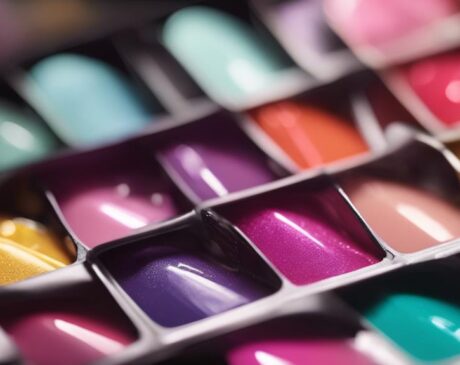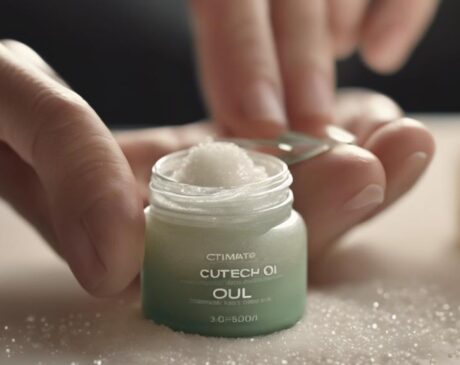Is Vaseline Good for Acrylic Nails?
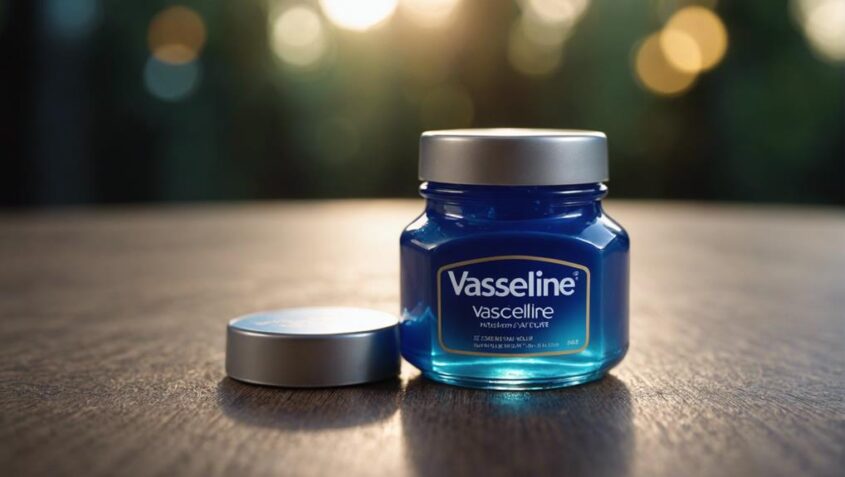
Vaseline can act as a protective barrier, moisturize, and maintain the flexibility of acrylic nails. However, it may leave a greasy residue, potentially leading to dryness and brittleness if not applied carefully. Proper application techniques are crucial to maximize benefits and prevent issues like lifting or weakening of the nails. Understanding Vaseline's role, utilizing alternative moisturizing oils, and mastering correct application methods are key. For enhanced nail care, explore the impact of Vaseline on acrylic nails beyond hydration.
Key Takeaways
- Vaseline acts as a protective barrier for acrylic nails.
- It helps prevent dehydration and maintains nail flexibility.
- The moisturizing effects reduce the risk of breakage.
- Vaseline can prolong the lifespan of acrylic nails.
- It enhances the appearance and softens skin around nails.
Benefits of Vaseline for Acrylic Nails
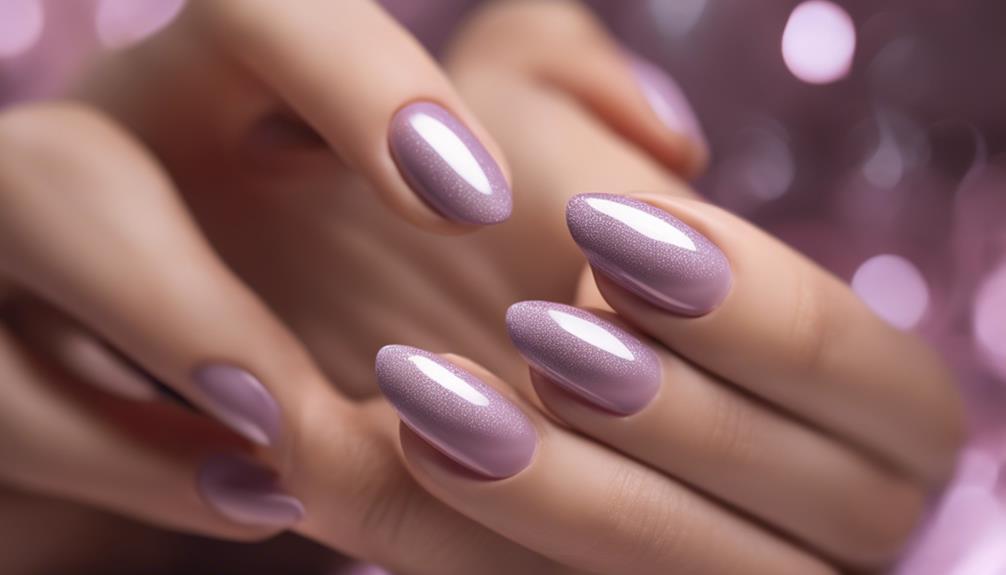
Have you ever wondered about the benefits of using Vaseline for maintaining acrylic nails? Vaseline, a versatile petroleum jelly product, offers several advantages in the realm of acrylic nail care. One key benefit is its ability to hydrate and moisturize both the nail bed and the cuticles, preventing them from becoming dry and brittle. This hydration can help in maintaining the flexibility and strength of acrylic nails, reducing the likelihood of breakage or chipping.
Additionally, Vaseline acts as a protective barrier against environmental stressors that could potentially damage acrylic nails. By applying a thin layer around the edges of the nails, Vaseline helps in sealing moisture and preventing water or chemicals from seeping underneath the acrylics, thus prolonging the lifespan of the manicure.
Moreover, Vaseline can also aid in maintaining the shine and luster of acrylic nails, giving them a polished and well-groomed appearance. Its emollient properties contribute to a healthy nail appearance, enhancing the overall aesthetic appeal of the manicure.
Drawbacks of Using Vaseline
While Vaseline offers various benefits for acrylic nails, it is essential to be aware of potential drawbacks associated with its usage. One of the primary drawbacks of using Vaseline on acrylic nails is that it can leave a greasy residue that attracts dust and dirt, making the nails appear unclean. Additionally, the occlusive nature of Vaseline can create a barrier that blocks moisture from reaching the nails, potentially leading to dryness and brittleness over time. Moreover, if Vaseline is not applied carefully around the nail bed, it may seep underneath the acrylic nails, causing them to lift or weaken.
| Drawback | Description | Potential Impact |
|---|---|---|
| Greasy Residue | Vaseline can leave a greasy film on acrylic nails | Nails may appear dirty and attract dust |
| Moisture Barrier | Vaseline can prevent moisture from reaching the nails | Nails may become dry and brittle |
| Risk of Lifting | Improper application can cause Vaseline to seep under nails | Acrylic nails may lift or weaken |
How to Apply Vaseline Properly
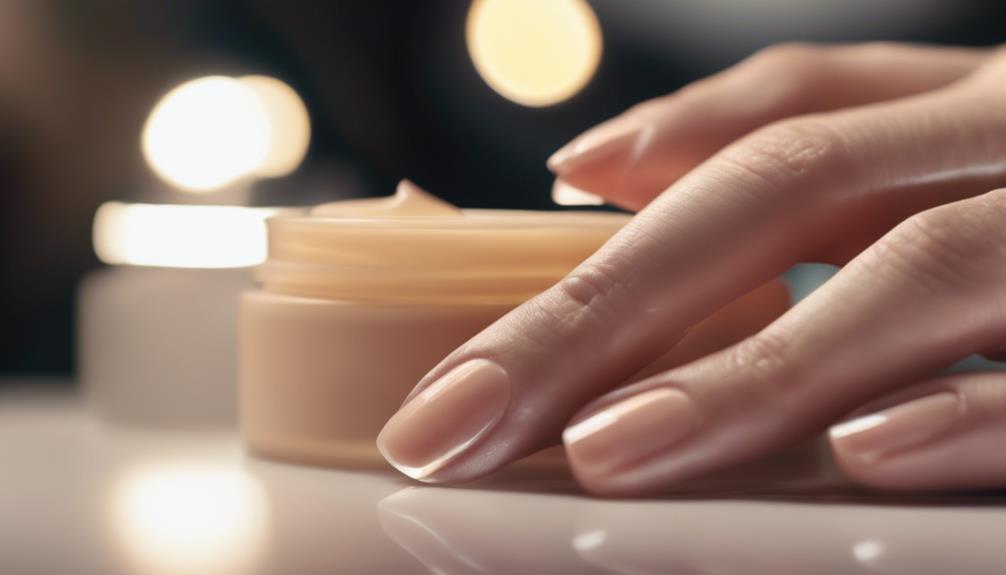
To ensure effective use of Vaseline on acrylic nails, understanding its role as a nail protectant is essential. Proper application techniques, such as using a small amount and avoiding contact with the nail bed, can maximize its benefits. Additionally, knowing how to thoroughly remove any Vaseline residue is crucial for maintaining the health and appearance of acrylic nails.
Vaseline as Nail Protectant
Safeguarding acrylic nails can be effectively achieved by applying Vaseline as a protective barrier. Vaseline acts as a barrier against harsh chemicals found in cleaning agents and other substances that can weaken or damage acrylic nails. To apply Vaseline properly, use a small amount and gently massage it around the cuticles and the skin surrounding the nails. This creates a protective layer that helps prevent direct contact between the nails and potentially damaging substances. By incorporating Vaseline into your nail care routine, you can maintain the quality and durability of your acrylic nails for longer periods, ensuring they remain strong and beautiful.
Application Tips for Vaseline
Enhance the effectiveness of Vaseline as a protective barrier for acrylic nails by mastering the correct application technique. To apply Vaseline properly, start by ensuring your hands and nails are clean and dry. Using a clean tool like a cotton swab or a small brush, apply a thin layer of Vaseline around the edges of your nails and on the surrounding skin. Be careful not to get Vaseline on the actual nail surface, as this can affect the adhesion of nail products. Focus on creating a barrier that will protect your skin from acetone or other harsh chemicals during the nail application process. Remember, a little Vaseline goes a long way in safeguarding your skin and cuticles.
Removing Vaseline Residue
When applying Vaseline as a protective barrier for acrylic nails, it is important to be aware of how to effectively remove any residual Vaseline after the application process. To ensure a clean finish, gently wipe off the excess Vaseline using a soft cloth or tissue. For a more thorough cleanse, dip a cotton swab in nail polish remover and carefully swipe it over the nail bed to eliminate any remaining residue. Alternatively, washing your hands with warm, soapy water can also help dissolve the Vaseline. Remember to be gentle to avoid damaging the acrylic nails or causing irritation to the surrounding skin. By following these simple steps, you can maintain the integrity of your acrylic nails and keep them looking flawless.
Alternatives to Vaseline for Acrylic Nails
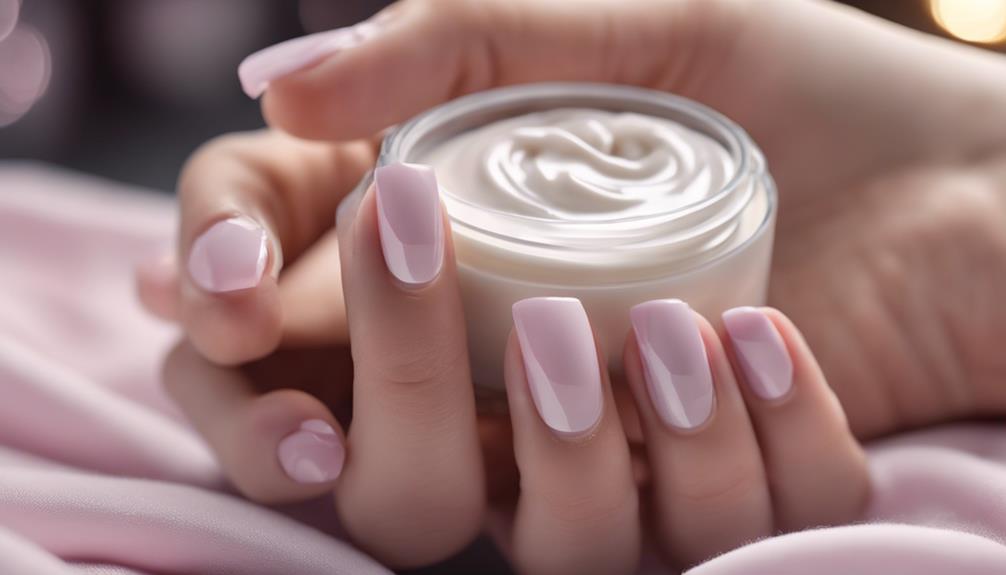
When considering alternatives to Vaseline for acrylic nails, it's essential to weigh the drawbacks of Vaseline for nail health. Exploring the benefits of using moisturizing oils can provide a nourishing option for maintaining acrylic nails. Additionally, understanding the importance of cuticle care in the absence of Vaseline can contribute to overall nail health and appearance.
Vaseline Drawbacks for Nails
While Vaseline can provide some benefits for acrylic nails, it is important to be aware of its drawbacks and consider alternative products for nail care. One drawback of using Vaseline on acrylic nails is that it can create a barrier that prevents moisture and oxygen from reaching the nail bed, potentially leading to dryness and weakening of the nails over time. Additionally, Vaseline can be quite greasy and may attract dirt and dust, making it challenging to keep the nails clean and healthy. As an alternative, consider using specialized nail oils or creams that are specifically formulated to nourish and strengthen acrylic nails without the drawbacks associated with Vaseline. These products often contain ingredients like vitamin E, jojoba oil, or almond oil, providing a more targeted and effective solution for nail care.
Moisturizing Oils Benefits
To effectively nourish and strengthen acrylic nails without the drawbacks associated with Vaseline, consider utilizing specialized moisturizing oils formulated with ingredients such as vitamin E, jojoba oil, or almond oil. These oils offer a lightweight and easily absorbable solution to keep your acrylic nails hydrated and healthy. Vitamin E is known for its antioxidant properties, which help protect the nails from damage and promote growth. Jojoba oil closely mimics the natural oils produced by the skin, making it an excellent choice for moisturizing and protecting the nails. Almond oil is rich in vitamins and minerals that nourish and strengthen the nails, preventing breakage and promoting overall nail health. Incorporating these moisturizing oils into your nail care routine can lead to stronger, more resilient acrylic nails.
Cuticle Care Importance
Given the importance of maintaining healthy acrylic nails, exploring alternatives to Vaseline for cuticle care can significantly contribute to the overall well-being of your nail enhancements. While Vaseline can be beneficial, innovative alternatives like jojoba oil, almond oil, or shea butter offer unique advantages for cuticle hydration and health. Jojoba oil closely resembles the natural oils produced by the skin, making it an excellent moisturizer for cuticles. Almond oil is rich in vitamins and minerals that nourish and strengthen the cuticles, promoting nail growth. Shea butter is known for its deep moisturizing properties, ideal for softening and protecting cuticles. By incorporating these alternatives into your nail care routine, you can enhance the longevity and appearance of your acrylic nails.
Can Vaseline Strengthen Acrylic Nails?
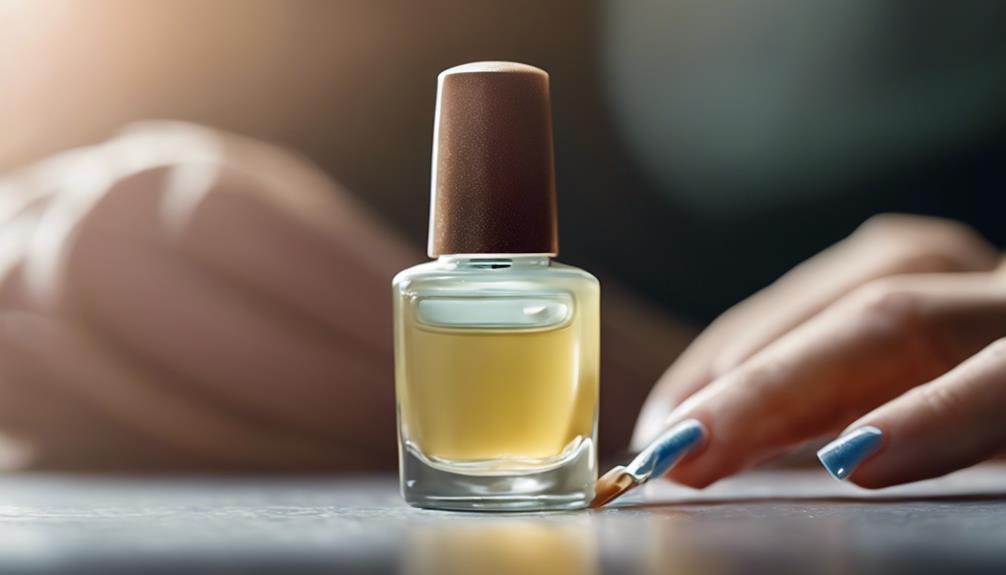
Vaseline, when used on acrylic nails, does not possess inherent properties that strengthen the nails themselves. While Vaseline can provide some benefits like moisturizing the nails and cuticles, it does not have the ability to enhance the strength of acrylic nails. To truly strengthen acrylic nails, it is essential to focus on proper nail care practices and use products specifically designed for nail strengthening. Here are some innovative ways to strengthen acrylic nails:
- Regular Maintenance: Trim and shape acrylic nails regularly to prevent breakage and maintain their strength.
- Nail Strengthening Treatments: Use specialized nail strengthening treatments or polishes that contain ingredients like biotin or keratin to improve nail health.
- Healthy Diet: Ensure your diet is rich in nutrients like vitamins, minerals, and proteins, which are essential for strong and healthy nails.
- Protective Measures: Avoid exposing your acrylic nails to harsh chemicals or excessive moisture, as these can weaken the nails over time.
Removing Vaseline Residue From Nails
After using Vaseline on acrylic nails, it is important to effectively remove any residue left behind to maintain the cleanliness and appearance of the nails. To efficiently eliminate Vaseline residue, start by washing your hands with warm, soapy water to soften the product. Gently scrub your nails using a soft-bristled nail brush to lift the Vaseline from the surface. Alternatively, you can soak a cotton ball in acetone-based nail polish remover and carefully wipe each nail to dissolve and remove the residue. Ensure thorough rinsing with water after cleaning to prevent any leftover residue. For a more natural approach, mix equal parts of vinegar and warm water, soak a cotton ball in the solution, and use it to clean the nails. Once the residue is removed, moisturize your nails and cuticles to restore hydration. Regular maintenance and proper cleaning techniques will help keep your acrylic nails in optimal condition.
Expert Tips for Nail Care With Vaseline
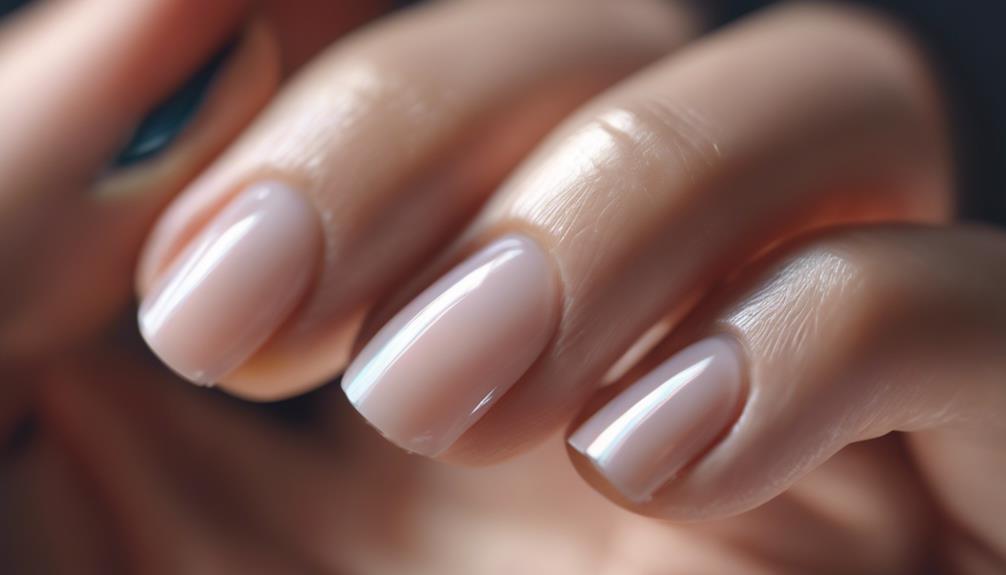
To enhance the health and appearance of acrylic nails, incorporating Vaseline into your nail care routine can provide beneficial effects when applied correctly and consistently. Vaseline can help moisturize and strengthen your nails, keeping them looking healthy and vibrant. Here are some expert tips for nail care with Vaseline:
- Overnight Treatment: Before going to bed, apply a generous amount of Vaseline to your nails and cuticles. Cover your hands with gloves or socks to allow the Vaseline to deeply penetrate overnight.
- Cuticle Care: Gently massage Vaseline into your cuticles to keep them soft and prevent dryness and cracking.
- Nail Strengthener: Vaseline can act as a protective barrier against environmental factors that can weaken your nails, helping to maintain their strength.
- Polish Removal: When removing nail polish, apply Vaseline around the skin of your nails to prevent staining and make the polish removal process easier.
Final Thoughts on Vaseline and Acrylic Nails
In considering the overall impact of incorporating Vaseline into your acrylic nail care regimen, it becomes evident that consistent and proper application can significantly contribute to the maintenance of nail health and aesthetics. Vaseline acts as a protective barrier, locking in moisture and preventing the acrylic nails from becoming brittle or dehydrated. Its occlusive properties can also help in reducing the risk of breakage and chipping, thus prolonging the lifespan of your manicure.
Furthermore, when used in conjunction with other nail care practices such as regular filing, cuticle maintenance, and proper hydration, Vaseline can enhance the overall appearance and durability of acrylic nails. Its versatility extends beyond a mere moisturizer, as it can also aid in softening the skin around the nails, promoting a more polished look.
Frequently Asked Questions
Can Vaseline Cause Acrylic Nails to Lift or Loosen?
Vaseline can potentially cause acrylic nails to lift or loosen due to its oily nature, creating a barrier that weakens the adhesive bond. To maintain the longevity of acrylic nails, it's advisable to avoid using Vaseline or similar products near them.
Will Vaseline Make Acrylic Nails Look Dull or Cloudy?
Vaseline, a petroleum jelly, can potentially create a dull or cloudy appearance on acrylic nails due to its occlusive nature. It may trap dirt and debris, resulting in a lackluster finish. Consider using nail-specific products for optimal nail health and shine.
Is It Safe to Use Vaseline on Colored or Decorated Acrylic Nails?
When it comes to colored or decorated acrylic nails, using Vaseline can potentially alter the appearance or integrity of the design. It is essential to consider the risk of dullness or cloudiness that Vaseline may bring to your nail art.
Can Vaseline Make Acrylic Nails More Prone to Breakage?
Applying Vaseline on acrylic nails may lead to increased flexibility, potentially making them more prone to breakage. This can be attributed to the moisturizing properties of Vaseline, which can soften the acrylic material.
How Often Should Vaseline Be Applied to Acrylic Nails for Best Results?
For optimal results, apply Vaseline to acrylic nails every 2-3 days. This frequency helps maintain moisture balance, preventing brittleness and breakage. Consistent application can enhance nail flexibility and durability, promoting overall nail health and longevity.


